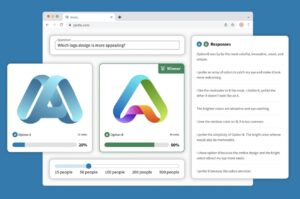Are you ready to elevate your marketing game? 🚀 Building a successful Facebook ad campaign can significantly enhance your brand’s visibility and drive valuable conversions. With over 2.9 billion monthly active users, Facebook provides a powerful platform to reach your target audience effectively. Follow this detailed step-by-step guide to create ads that not only capture attention but also deliver impressive results!
Step 1: Define Your Campaign Objective 🎯
The first step in creating a successful Facebook ad campaign is to clearly define your campaign objective. Facebook offers various objectives tailored to different marketing goals. Selecting the right one is crucial for guiding your ad strategy.
Common Campaign Objectives:
- Brand Awareness: Increase awareness of your brand among potential customers.
- Reach: Show your ad to as many people as possible in your target audience.
- Traffic: Drive users to your website or landing page.
- Engagement: Boost post engagement, page likes, or event responses.
- App Installs: Encourage users to download your mobile app.
- Video Views: Promote your video content to increase views.
- Lead Generation: Collect leads through forms directly on Facebook.
- Conversions: Drive specific actions on your website, such as purchases or sign-ups.
Tip:
Choose an objective that aligns with your overall marketing goals. For example, if you want to increase sales, select “Conversions” as your objective.
Step 2: Identify Your Target Audience 👥
Understanding your audience is key to creating relevant ads that resonate. Facebook provides robust targeting options to help you reach the right people.
Targeting Options:
- Demographics: Age, gender, location, education, and language.
- Interests: Hobbies, favorite brands, and activities that your audience engages with.
- Behaviors: Purchase behavior, device usage, travel habits, and more.
- Custom Audiences: Upload your customer list or retarget website visitors who have previously interacted with your brand.
- Lookalike Audiences: Create audiences similar to your existing customers to expand your reach.
Tip:
Create detailed buyer personas to visualize your ideal customers. Consider factors such as their pain points, preferences, and online behavior to tailor your messaging effectively.
Step 3: Set Your Budget and Schedule 💰
Deciding how much you want to spend on your campaign and when to run your ads is crucial for effective budget management.
Budgeting Options:
- Daily Budget: The average amount you’re willing to spend per day. This helps control your spending over time.
- Lifetime Budget: The maximum amount you’ll spend over the entire campaign duration. This allows Facebook to optimize your ad delivery within that budget.
- Ad Schedule: Choose to run your ads continuously or during specific times of the day or week. Consider when your target audience is most active.
Tip:
Start with a modest budget to test your ads. Monitor performance and scale up based on successful results. Use Facebook’s ad auction system to your advantage by bidding strategically.
Step 4: Create Compelling Ad Content 🖼️
Your ad content is what will grab attention and drive action. Focus on the following elements to create compelling ads:
Key Elements of Ad Content:
- Visuals: Use high-quality images or videos that resonate with your audience. Eye-catching visuals can significantly improve engagement. Consider using carousel ads to showcase multiple products or features.
- Ad Copy: Write concise and persuasive copy that clearly communicates your message. Highlight benefits and include a strong call-to-action (CTA). Use language that speaks directly to your audience’s needs and desires.
- Format: Choose from various ad formats, such as:
- Single Image Ads: Simple and effective for showcasing one product or service.
- Video Ads: Great for storytelling and demonstrating products in action.
- Carousel Ads: Allow users to swipe through multiple images or videos, ideal for showcasing a range of products.
- Slideshow Ads: Create lightweight video ads using a series of images, perfect for users with slower internet connections.
- Collection Ads: Feature a cover image or video followed by product images, allowing users to browse and shop directly from the ad.
Tip:
A/B test different visuals, copy, and formats to see what resonates best with your audience. Use Facebook’s split testing feature to compare performance.
Step 5: Optimize Your Landing Page 🌐
Ensure that the landing page your ad directs users to is optimized for conversions. A seamless user experience is essential for turning clicks into customers.
Key Elements of a High-Converting Landing Page:
- Relevance: The landing page should match the ad’s messaging and offer. Ensure consistency in visuals and copy to avoid confusion.
- User Experience: Make sure the page loads quickly (ideally under 3 seconds) and is mobile-friendly. A responsive design is crucial, as many users will access your ads on mobile devices.
- Clear CTA: Include a prominent call-to-action that guides users on what to do next, such as “Shop Now,” “Sign Up,” or “Get Started.” Make the CTA button stand out visually.
- Minimal Distractions: Keep the design clean and focused on the primary goal. Limit navigation options to prevent users from leaving the page.
Tip:
Use tools like Google Analytics or Facebook Pixel to track user behavior on your landing page. Analyze metrics such as bounce rate and conversion rate to identify areas for improvement.
Step 6: Launch Your Campaign 🚀
Once everything is set, it’s time to launch your campaign! Before going live, double-check all settings, including targeting, budget, and ad content.
Tip:
Monitor your campaign closely, especially in the first few days, to gather data and insights. Be prepared to make adjustments based on initial performance metrics.
Step 7: Analyze and Optimize Your Campaign 📊
After your campaign has run for a while, analyze the results to see what worked and what didn’t. Key metrics to track include:
Important Metrics:
- Click-Through Rate (CTR): Indicates how well your ad is resonating with your audience. A higher CTR suggests that your ad is compelling.
- Conversion Rate: Measures how many users took the desired action after clicking your ad. This is crucial for assessing the effectiveness of your landing page.
- Cost Per Click (CPC): Helps you understand how much you’re spending for each click. Monitor this to ensure your campaign remains cost-effective.
- Return on Ad Spend (ROAS): Calculate the revenue generated for every dollar spent on ads. This metric is vital for evaluating overall campaign success.
Tip:
Use Facebook Ads Manager to access detailed analytics and make data-driven decisions for future campaigns. Regularly review performance and adjust targeting, budget, and content as needed.
Step 8: Scale Successful Campaigns 📈
Once you identify which ads and strategies are performing well, consider scaling your campaigns to maximize results.
Scaling Strategies:
- Increase Budget: Gradually increase the budget for high-performing ads to reach a larger audience.
- Expand Targeting: Test new audience segments or broaden your targeting criteria to capture more potential customers.
- Duplicate Successful Ads: Create duplicate versions of successful ads with slight variations to test different approaches while maintaining the core elements that worked.
Tip:
Always monitor performance closely when scaling to ensure that increased spending continues to yield positive results.
Conclusion: Keep Learning and Adapting 🔄
Building a winning Facebook ad campaign is an ongoing process. Stay updated on the latest trends, features, and best practices, and continually test new strategies to improve your results. With dedication and the right approach, your Facebook ads can become a powerful tool for driving growth and engagement.

Free Assessment
Discover in just 30 minutes how our tailored social media and digital marketing strategies can elevate your brand awareness, synchronize your marketing and sales efforts, and reliably generate new leads, customers, and revenue streams.




